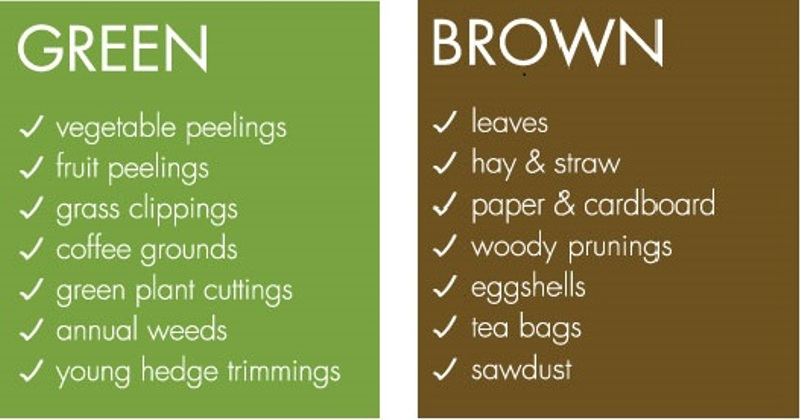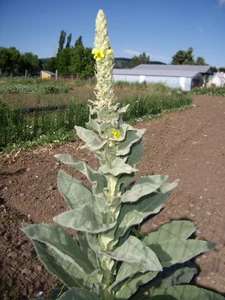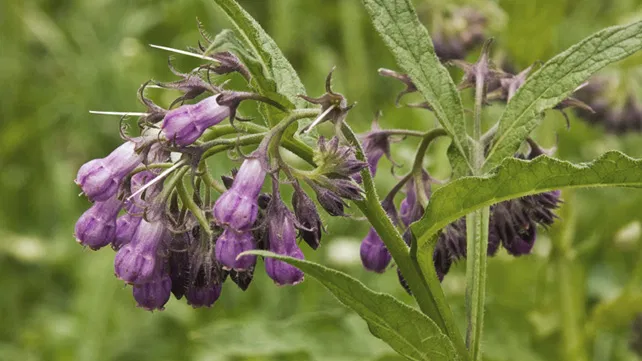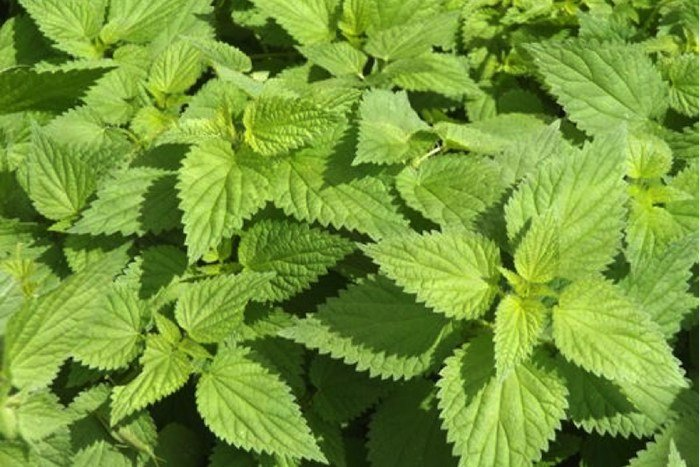
Compost and Dynamically Accumulating Plants
If you’ve ever struggled with unhealthy plants, rampant pests, and other common gardening issues, you may want to take a look at what your plants are growing in. Soil is the foundation of a healthy garden! When plants are grown outside of their pH range or with unbalanced nutrient levels, they tend to struggle more and not reach their full potential, plus, struggling plants make for easy munching. Pests that eat plants tend to go for the weak or dying plants first, so while it may look like rollie pollies or ants are eating your plants, the issue is actually that the plant was already struggling, and the bugs are just helping themselves to a plant that isn’t likely to survive the growing season anyway. With healthy soil, we can grow healthy plants--and have the best version of our gardens possible!
Another reason to pay attention to our soil is that we are running out of it. According to the Food and Agriculture Organization of the United Nations, soil erosion removes fertile and protective topsoil, exposing lower soil layers. It occurs naturally in all environments as a result of intensive wind and water movement, but is accelerated by human activity such as deforestation, overgrazing, large-scale tilling, and other forms of unsustainable agriculture and industry. This is a tremendous issue because soil is a finite resource, meaning that it cannot be effectively replenished within a human lifespan. Since 95% of our food comes from the soil, it’s imperative that we protect and restore our soil!

Soil is essential to hosting a healthy garden and a healthy planet, and there are steps we can take to help save it. Fortunately, we can make our own beautiful, healthy, rich soil to replenish gardens and the earth! Composting is loosely defined as the decomposition process of plant materials, aided by micro and macro organisms. It allows us to create our own soil while also reducing food waste, since we can add most kitchen scraps to a compost pile. Composting can seem complicated, but it can be tailored to your lifestyle and available space--so with a general understanding of composting basics, you’ll be ready to get started!
Compost thrives with a balance of nitrogen and carbon, as well as regular moisture and aeration. If we keep these four components in mind, we can make our own fertile soil in a matter of months! Let’s have a look at each of these four components to compost, starting with nitrogen and carbon. Carbon sources for your pile include leaves, hay, straw, paper, and eggshells, and are referred to as “brown” materials. Nitrogen sources include fruit and vegetable scraps, grass clippings, and coffee grounds, and are referred to as “green” materials. A healthy compost pile will have a ratio of about two carbon sources to one nitrogen. It can be confusing to think of “brown” and “green” compost materials, especially because “green” materials might not actually be the color green and “brown” materials may not actually be brown. If it makes things easier for you, keep a list of “green” versus “brown” compost scraps in your garden or kitchen to reference whenever you need it.

Compost also needs consistent moisture and aeration. Keeping a compost pile moist by spraying it with a hose regularly (but not often enough to soak it completely) allows microorganisms to stay active and speeds up the decomposition process. If the pile is too wet, it will start to stink--which is where aeration comes into play. Be sure to turn the compost regularly to allow oxygen into the pile, which facilitates composting. As the pile composts, it will heat up. A temperature of about 140 degrees F is ideal, as too much heat will kill off the microorganisms doing the composting.
Some gardeners have strict rules for their compost piles and make sure that their nutrient ratio, moisture, oxygen, and temperature is always perfect. While this accuracy will result in faster composting, it isn’t always necessary! Some “lazy” composters will just start a pile of produce scraps and yard waste, adding to it as they please and allowing the occasional rain to provide moisture. This method will also produce compost, but it will take longer before rich, fertile soil is produced. If somewhere in-between feels like a better fit for you, go for it! Or experiment with composting a little to figure out what level of maintenance is a good fit for your setting and schedule--just try not to include citrus, meat, dairy, or pet droppings in the compost. Composting can even be done in an apartment or other setting where there isn’t much extra outdoor space.

Now that we’re really in the thick of composting, we can’t talk about compost piles without also discussing dynamic accumulators. Dynamic accumulators are truly the closest thing I have seen to magic in gardening because they are tremendously powerful plants, with unbelievable ecological and medicinal properties. Dynamic accumulators are fantastic plants to compost because they have far-reaching roots that retrieve nutrients from deep within the soil and store them in their leaves. When the plant is composted and the leaves break down, these hard-to-access nutrients are released into the compost, which can then be used in your garden to make these nutrients more available to your shallow-rooted crops! The specific work of dynamic accumulators is not scientifically proven, and in fact it hardly has any significant research to back it up at all. However, there are many positive testimonies on the use of dynamic accumulators to improve soil and garden health, so we can still appreciate the theory of dynamic accumulation as a holistic, permaculture-based approach to creating and healing soil, and using biodiversity to improve vigor, health, and resilience in our garden spaces.
Here are a few examples of dynamic accumulators and the wonderful properties they contain:
Mullein (Verbascum spp.)

Mullein grows one main stem with many large, fuzzy leaves, similar to Lamb’s Ear, and eventually blooms with pleasant yellow flowers. You may find it in your yard or garden, but it is also commonly found in prairies or along treelines. Mullein leaves can be dried for a wonderful, creamy tea, and the leaves can even be smoked to help heal the respiratory system. It grows well in the garden alongside peonies, ornamental grasses, and other plants. I tend to let it grow wherever it pops up in my garden, as long as its large leaves won’t overshadow my crops.
Comfrey (Symphytum spp.)

Comfrey is a favorite of pollinators and gardeners alike. With large leaves and small, bell-shaped purple flowers, Comfrey is beneficial for bees, hummingbirds, and other native garden critters. Plant comfrey mindfully--it can grow into large bushes and begin to take over your yard or garden! I have my comfrey planted beneath my fruit trees to attract bees and to mine nutrients from deep soil with their long taproots.
Borage (Borago officinalis)

Anyone who knows me well (or listens to me ramble about plants) knows that borage is my favorite flower. They’re wonderful plants with large leaves and purple/blue/pink star-shaped flowers that attract bees upon bees upon bees! Plus, the leaves and flowers are both edible and add a light, cucumber-like flavor to teas, jellies, salads, and more.
Nettle (Urtica dioica)

Nettle is a somewhat misunderstood dynamic accumulator. It has tremendous benefits for human health and in the garden, but is often overlooked because it is covered in small stinging hairs. Funny enough, nettle stings have been historically used for pain relief because of their numbing effects. They are also edible when cooked, and can be used for tremendously nutrient-packed herbal teas, as well as fertilizer-rich compost teas for the garden.
Because each of these plants mine nutrients from the soil to store in their leaves, they make for excellent composting material as well as mulch. Removing a plant’s leaves and leaving them where they lay to provide mulch is referred to as “chop and drop”, and ensures that the soil is covered while also allowing the nutrients in the leaves to break down into the soil over time. Another way to mulch with dynamic accumulator leaves is to tear or shred the leaves into smaller pieces, to make for a more reliable mulch that breaks down faster and won’t blow away.
Aside from composting and planting dynamic accumulators for compost, soil loss can also be prevented in the garden by mulching in the Fall to prevent winter soil loss, planting cover crops, and growing soil-building plants like nitrogen fixers, soil aerators like sunflowers or radishes, and other plants that help grow soil.
Whether you’re a lazy composter or a full-time soil-maker and dynamic accumulator enthusiast, any actions you take to help replenish the world’s soil is worthwhile! Compost is wonderfully beneficial to gardens because it is packed with nutrients, hosts millions of micro and macro organisms, and helps to aerate soil and keep it from drying out. Compost supports healthier plants and healthier gardens, while also helping the earth--so why not give it a try?
To learn more about composting, I highly recommend the Composting episode of Stuff You Should Know, an informational podcast from HowStuffWorks. We also have a great composting book at the Library called Soil and Composting, which is a guide to using compost to build fertile and healthy gardening soil. For more resources, search the catalog for more great composting info!